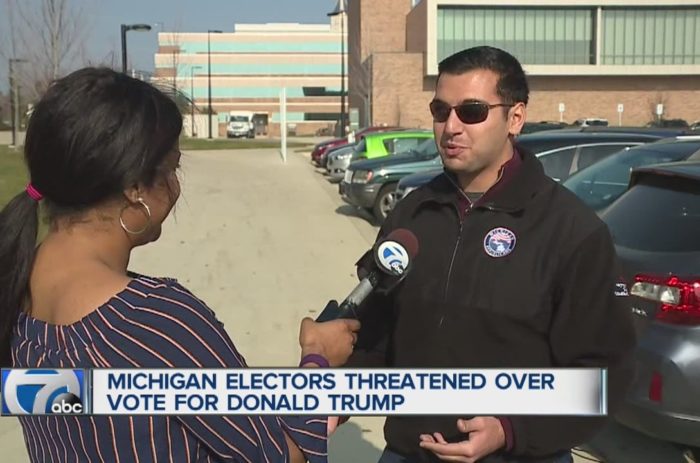The following is an excerpt from OpinionJournal’s “Best of the Web” at WSJ written by the editor, James Taranto.
 Bottom Story of the Day
Bottom Story of the Day
“El Paso Ranked No. 22 in Best Cities for Halloween”—headline, El Paso Times, Oct. 29
The Gloves are Off
We’ve got to hand it to NARAL Pro-Choice America (née National Association for the Repeal of Abortion Laws), which has put out the funniest series of political ads at least since one Christine O’Donnell solemnly intoned to the camera: “I am not a witch.”
The NARAL spots—TV and radio—seek to influence the Colorado senate race, in which Republican Rep. Cory Gardner has been slightly favored to unseat Sen. Mark Udall. The incumbent has relied so heavily on the once-fashionable Democratic war-on-women shtick that he’s earned the derisive nickname “Mark Uterus.”
NARAL’s ads send mixed messages, which is to say that they jump around in an abrupt and madcap way between WOW and other themes. The radio spot begins with a conversation between a heterosexual couple. He has returned home to report failure in his mission to purchase condoms. “How did this happen?” she asks.
He replies: “Cory Gardner banned birth control, and now it’s all on us guys. And you can’t find a condom anywhere. And the pill was just the start. The Pell grants my little brother was counting on for college? Cory cut them! Climate change that everyone knows is weirding our weather—Cory flat-out denies it! Sweet pea, Cory denies science!”
Some guys just know how to talk to the ladies.
The TV ad seems to be directed at the gents. It’s divided into two parts, each introduced by a narrator with a high-pitched voice, one of each sex, frantically addressing the viewer as “Guysguysguysguysguys.” The second part is variation on the contraception theme: “If Cory Gardner gets his way, you better stock up on condoms.” The first part claims Gardner “denies climate change” and shows cars being swept away by rising seas.
Guysguysguysguysguys, Colorado is a doubly landlocked state whose lowest point is 3,310 feet above sea level.
The ads’ claims about Gardner are false. An anti-Gardner site quotes the congressman as acknowledging climate change: “I think the climate is changing, but I don’t believe humans are causing that change to the extent that’s been in the news.” As for the assertion that Gardner seeks to ban birth control, that would be true only if “ban” meant “to make available without a prescription.”
We guess the rationale here is to hope either that the massive quantity of arguments will compensate for their poor quality, or that their scattershot variety will somehow yield a broad appeal across liberal constituencies. Maybe they even have some nonliberal constituencies in mind. We were scratching our head wondering why they would make the small concession to reality of acknowledging that Gardner doesn’t want to ban condoms. Then it occurred to us that maybe they imagine there are extremists who do, and are trying to depress turnout.
Meanwhile, the New York Times reports on another Democratic tack:
In the final days before the election, Democrats in the closest Senate races across the South are turning to racially charged messages—invoking Trayvon Martin’s death, the unrest in Ferguson, Mo., and Jim Crow-era segregation—to jolt African-Americans into voting and stop a Republican takeover in Washington.
The images and words they are using are striking for how overtly they play on fears of intimidation and repression. And their source is surprising. The effort is being led by national Democrats and their state party organizations—not, in most instances, by the shadowy and often untraceable political action committees that typically employ such provocative messages.
Also surprising is the Times story’s somewhat disapproving tone. It’s a news story, but it wouldn’t be hard to rewrite it into an opinion piece arguing that the Dems are getting desperate. Like this one:
Desperate Democrats are rushing to save suddenly vulnerable House incumbents, even in states where President Barack Obama cruised to double-digit victories, amid fresh signs of Republican momentum less than a week before the midterm elections.
Oh wait, that was a news story too, from the Associated Press. You haven’t heard much about the House elections, since the Republicans already have a majority in that chamber and have long been expected to retain it. But now, the AP reports, “the once friendly [Democratic] terrain of New York, California, Obama’s native state of Hawaii and adopted state of Illinois all now pose stiff challenges to Democrats. . . . The question is whether Republicans can gain enough seats to rival their post-World War II high water mark of 246.” That would require a pickup of 12 seats, not counting the vacant seat formerly held by Eric Cantor.
Further down the ballot, the Washington Post reports that “Republicans have the opportunity to take control of a record number of state legislative chambers across the country this year, as Democrats play defense in unfavorable terrain.” Among the states with endangered Democratic majorities are Iowa, Nevada, New Hampshire, Washington and West Virginia.
A theory that has been popular, especially among Democrats, holds that demographics give an insurmountable advantage to Republicans in midterm elections and to Democrats in presidential ones because GOP-leaning subpopulations—white, male, older—tend to be more reliable voters and hence likelier to come out in the off years.
Although you can find an exception on either side by going back just a decade, there is no doubt some truth to the theory. But it is a mistake to suppose that demographic voting patterns are unchanging. There is evidence that the shift toward Republicans evident in opinion polls is in part the result of movement within purportedly Democratic constituencies.
National Journal’s Ron Fournier notes that in a survey of 18- to 29-year-olds by Harvard’s Institute of Politics, those “who told the IOP they will ‘definitely be voting’ Tuesday favored Republicans over Democrats, 51 percent to 47 percent. That is a reversal of September 2010 results, when the IOP found Democrats favored over Republicans among young likely voters, 55 percent to 43 percent.” Fournier’s analysis:
In a stunning turnaround, likely voters in the so-called millennial generation prefer a Republican-led Congress after next week’s elections, and young Hispanics are turning sharply against President Obama.
A new national poll of 18-to-29-year-olds by Harvard’s Institute of Politics shows that young Americans are leaving the new Democratic coalition that twice elected Obama. The news is little better for the GOP: These voters, who more than any other voting bloc represent the future of the American electorate, generally hold Republicans in the lowest regard.
Fournier is trying a little too hard to be evenhanded. The finding that young voters hold the GOP “in the lowest regard” is hardly new. The GOP can’t count on their loyalty, but that’s still bad news for the party that thought it could.
The Hill has a pair of stories titled “GOP Gains on Dems Among Hispanics” and “As Dems Lose Latinos, Senate Could Follow.” Both are based on the same recent survey, summed up this way in the latter piece:
A Pew poll out Wednesday revealed Democrats suffered an 8-percentage-point drop in support from Hispanic voters nationwide since 2010, down to 57 percent. Meanwhile, Republicans gained 6 points over the past four years, with 28 percent now saying they support a generic Republican House candidate.
To be sure, that’s still a sizable majority of Hispanics saying they’ll vote Democratic, and Republicans would be incautious to bet on the Dems’ failure to hold a majority of the under-30 set, even this year. But winning elections requires a majority of the overall electorate, not a majority of every demographic subcategory. The Colorado Senate race is the clearest example that one can appeal to the so-called ascendant electorate out of desperation as well as strength.
For more “Best of the Web” click here and look for the “Best of the Web Today” link in the middle column below “Today’s Columnists.”



